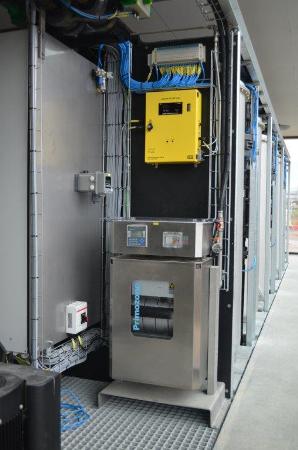Application of Ozonation in Removing High Dosages of Pharmaceutical Effluent from Wastewater
By AZoCleantech.com Staff Writers
Read full story here
Topics Covered
Introduction
Micro Pollutants and Pharmaceutical Residue
Use of Ozone in Pharmaceutical Residue Removal
Ozone Installations in Sweden for Pharmaceutical Residue Removal
Conclusion
About Primozone
Introduction
Sex change in fish due to the presence of pharmaceutical residue in river water was a problem first noticed around a decade ago. Behavioral change in perch has been observed in recent studies on pharmaceutical residue. The presence of micro pollutants such as pharmaceutical residue in waste water has been found in many studies. Without being properly treated by the waste water treatment plants, this water is often released into the environment.
Several European nations are now taking political action to lower the impact of the pharmaceutical residue. For instance, the decision has been made in Switzerland to equip 100 sewage plants with systems to eliminate pharmaceutical residue.
Micro Pollutants and Pharmaceutical Residue
All micro pollutants are bioactive and persistent. Biologically harmful materials such as arsenic, mercury, lead, hydrocarbons, pesticides, and personal care products such as sunscreen, cosmetics, and fragrances are some of the examples of micro pollutants. Since pharmaceuticals are not engineered to buildup in the body, they leave the body and reach waste water. However, they are also designed to be persistent and degrade very slowly in nature.
Another concern is the bioactive nature of pharmaceuticals. Household sewage is the major source of pharmaceutical effluent, representing 70% of the pharmacutical residue, according to some studies. Livestock farming represents 20%, while hospital effluent represents only 5%. Nevertheless, hospitals have taken initiatives to decrease the pharmaceutical effluent. Primozone is involved in a full scale project at the Herlev Hospital in Denmark (Figure 1) to integrate ozone with other technologies for pharmaceutical residue reduction.

Figure 1. Primozone installation at the Herlev Hospital in Denmark
Use of Ozone in Pharmaceutical Residue Removal
The majority of waste water treatment plants have not been equipped for pharmaceutical residue removal. Studies have revealed that only 10% is removed at the treatment plants, whereas 20% ends up in sludge and as high as 70% reaches the aquatic environment. Only a limited number of efficient techniques are available to lower the level of pharmaceutical residue in water.
Traditional biological and mechanical treatment techniques are inadequate as they degrade only a small portion of the pharmaceutical residue. Conversely, being a selective oxidant, ozone largely attacks electron rich structures such as double bonds in molecules. By doing this, it can efficiently break down pharmaceuticals. The Primozone ozone technology allows ozone to be used as a cost-effective solution for pharmaceutical residue removal.
Most studies reveal that ozone can remove up to 95% of the pharmaceutical residue, depending on the retention time and dosage. According to a Primozone study, ozonation after filtration can eliminate 95% with 5g ozone/m3 water. Studies also recommend the use of sand filters after ozonation to achieve further cleaning of the water.
Ozone Installations in Sweden for Pharmaceutical Residue Removal
Sweden devotes a lot of attention to research exploring the ways for pharmaceutical residue reduction in waste water. The problem has been identified in many waste water treatment plants and several Swedish universities are carrying out studies on the impact of the pharmaceutical residue on the environment. Swedish governmental bodies are providing grants to encourage more research into this area.
Primozone has been awarded a grant to construct a mobile pilot scale ozone system to remove pharmaceutical residue. This year, the company will perform pilot installations at 10 waste water treatment plants in Sweden to test and corroborate the design of an optimal ozone solution on existing waste water treatment facilities for pharmaceutical residue removal from various water flows and under different environmental conditions.
Conclusion
According to Primozone, it is now necessary to remove micro pollutants such as pharmaceutical residue in waste waters. However, current waste water treatment plants are not equipped to eliminate pharmaceutical residue. Nevertheless, proven techniques such as the Primozone ozone technology are available to help reduce the level of pharmaceutical residue in waste water at a lower cost.
About Primozone
Primozone is redefining ozone technology with its cutting-edge ozone generator technology and it’s custom designed ozone solutions. The Primozone ozone technology enables a very high ozone concentration (20wt%) and at a very low life-cycle cost.
Primozone was founded in 2000 and is since 2003 wholly owned by Westfal-Larsen Technology of Bergen, Norway. The W-L group is a family-owned group of companies founded in 1905.
The Primozone ozone generation technology is sold worldwide and used for different industrial water treatment and water reuse applications as well as municipal drinking water and waste water applications.

